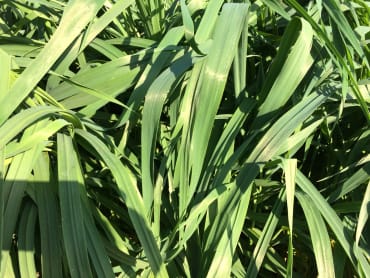The Forage Oats we have currently are particularly tall and high-yielding, have strong straw, and produce large plump seeds if grown to maturity for grain. They mature 2-3 weeks later than Common Oats.
As cover crop: Remarkably quick, lush, leafy growth makes them especially competitive with weeds, and they generate organic matter like nobody’s business. Faster seedling growth than BMR or millet, though these crops will eventually outstrip any oats in height. Customer Alex Redfield told us that his Forage Oats made as much biomass as Common Oats sown at twice the rate. Tolerates a wide range of weather and soil conditions. They are reliably killed by New England winters, so they are a better choice for winter soil protection than Winter Rye if you don’t want to deal with regrowth and tillage in the spring.
As forage: If cut in the early boot stage (when the flower head is only just detectable inside the leaf sheath) the hay can achieve protein levels of 19% and the plant will regrow for a second crop. Forage oats harvested at the soft-dough stage (when the kernel is developing but still soft enough to cut with a fingernail) can achieve dry-matter yields of nearly 4 tons per acre in New England. Makes excellent bedding straw. Also suitable for grazing.
Germinate best when soil is over 50°F; can be sown spring through fall at 100#/acre, 3#/1000 sq ft. ②





